 W
WAmericans Before Columbus by Elizabeth Baity is a children's book about the history of pre-Columbian cultures in America illustrated by C. B. Falls. It was published in 1951 and was a Newbery Honor recipient in 1952. In the book, Elizabeth Chesley Baity talks about the history of the tribes of people in South and Meso-Americas from the time of the Ice Age when they crossed the Bering Strait up until Spain's arrival. The author gives insight through the archaeologists findings on how each individual culture of American Indian lived, what their history was and what became of them. Focusing on the Aztecs, the Mayans, the Iroquois, the Incas and the different important builders and people throughout the continents, she teaches about each individual group and compares them to the readers modern life. Though some of the information is outdated now, it is inundated with information and written for children to begin them on the path towards history and archaeology.
 W
WThe Apple and the Arrow is a children's novella written and illustrated by Mary and Conrad Buff, published by Houghton Mifflin in 1951. It retells the legend of William Tell from the viewpoint of his 12-year-old son Walter. It is set in 1291, during the political upheaval that led to the foundation of the Old Swiss Confederacy.
 W
WThe Armourer's House is a children's historical novel by Rosemary Sutcliff and first published in 1951.
 W
WBill Bergson Lives Dangerously is a 1951 Swedish novel written by Astrid Lindgren. It's the 2nd book about the Master Detective Kalle Blomkvist. In this book the Rövarspråket appears for the first time and is very popular until present. According to the book, Eva-Lotta's father Master Baker told her when he and his friends spoke Rövarspråket as boys.
 W
WHomer Price is the title character in two children's books written by Robert McCloskey. Homer Price was published in 1943, and Centerburg Tales in 1951.
 W
WThe Clue of the Black Keys is the twenty-eighth volume in the Nancy Drew mystery series. It was first published in 1951 under the pseudonym Carolyn Keene. The actual authors were ghostwriters Wilhelmina Rankin and Harriet Stratemeyer Adams.
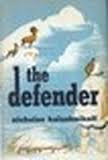 W
WThe Defender is a children's novel by Nicholas Kalashnikoff. Set deep within the mountains of Siberia, the novel is about an ostracized shepherd who defends the mountain rams from hunters. The novel, illustrated by Claire Louden and George Louden, was first published in 1951 and was a Newbery Honor recipient in 1952.
 W
WThe Dragons of Blueland is the third and final book in the My Father's Dragon trilogy by Ruth Stiles Gannett. In this novel, the dragon returns to his homeland only to find that his family is in danger. The illustrations within the book are black and white lithographs, done by the author's stepmother, illustrator Ruth Chrisman Gannett.
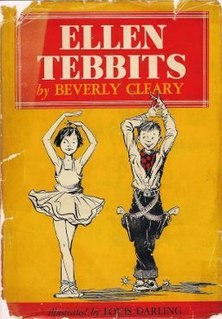 W
WEllen Tebbits is a 1951 children's novel written by Beverly Cleary. It is Cleary's second published book, following Henry Huggins. This humorous realistic fiction story tells the adventures of young Ellen and the new girl in her school, Austine Allen.
 W
WFinders Keepers is a book written by William Lipkind and illustrated by Nicholas Mordvinoff. Released by Harcourt, it was the recipient of the Caldecott Medal for illustration in 1952.
 W
WFive on a Hike Together is the tenth novel in the Famous Five series by Enid Blyton. It was first published in 1951.
 W
WFreddy Rides Again (1951) is the 18th book in the children’s series Freddy the Pig, written by American author Walter R. Brooks and illustrated by Kurt Wiese. In it, the talking Bean farm animals confront rich new neighbors who demand changes in the farm community.
 W
WThe Gauntlet is a children's historical novel, written by Ronald Welch, and published in 1951. It is a time slip story set both in 1951 and in 1326, mainly in Carreg Cennen Castle, but also in Kidwelly Castle and Valle Crucis Abbey.
 W
WGinger Pye is a book by Eleanor Estes about a dog named Ginger Pye. The book was originally published in 1951, and it won the Newbery Medal for excellence in American children's literature in 1952.
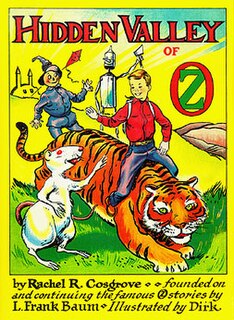 W
WThe Hidden Valley of Oz (1951) is the thirty-ninth in the series of Oz books created by L. Frank Baum and his successors. It was written by Rachel R. Cosgrove and illustrated by Dirk Gringhuis.
 W
WThe Kid Who Batted 1.000 is the name of two separate books, both juvenile baseball novels. The key plot device – the advent of a young batsman who is able to achieve a walk at every plate appearance – is identical in both novels.
 W
WThe Light at Tern Rock is a children's novel by Julia Sauer. Illustrated by Georges Schreiber, it was first published in 1951 and received a Newbery Honor award in 1952.
 W
WMinn of the Mississippi is an illustrated children's book by Holling C. Holling. Though short, it is more a novel than a picture book. First published in 1951, it received the Newbery Honor award the next year.
 W
WThe Mystery of the Vanished Prince, published 1951, is the ninth novel in the Five Find-Outers series written by Enid Blyton.
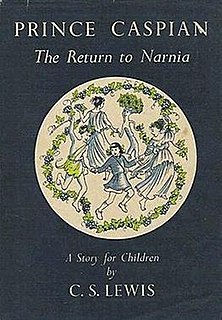 W
WPrince Caspian is a high fantasy novel for children by C. S. Lewis, published by Geoffrey Bles in 1951. It was the second published of seven novels in The Chronicles of Narnia (1950–1956), and Lewis had finished writing it in 1949, before the first book was out. It is volume four in recent editions of the series, sequenced according to the internal chronology of the books. Like the others, it was illustrated by Pauline Baynes and her work has been retained in many later editions.
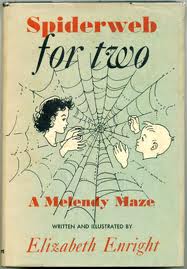 W
WSpiderweb for Two: A Melendy Maze is a children's novel written and illustrated by Elizabeth Enright and published by Rinehart in 1951. It is the last of four books in the Melendy family series which she inaugurated in 1941. It tells the story of the two youngest among five children after they alone remain at the family's "four-story mistake" house in the country.
 W
WThe Wailing Siren Mystery is Volume 30 in the original The Hardy Boys Mystery Stories published by Grosset & Dunlap.
 W
WWhite Boots is a children's novel by Noel Streatfeild. It was first published by Collins publishers in 1951. The book was published under the title Skating Shoes in the US, also in 1951. White Boots tells the story of a poor girl and a rich girl who meet as a result of ice skating and is the tale of their unlikely friendship.
 W
WThe Wool-Pack is a children's historical novel written and illustrated by Cynthia Harnett, published by Methuen in 1951. It was the first published of four children's novels that Harnett set in 15th-century England. She won the annual Carnegie Medal from the Library Association, recognising it as the year's best children's book by a British subject.